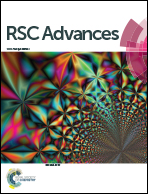Research progress on design strategies, synthesis and performance of LiMn2O4-based cathodes
Abstract
Spinel LiMn2O4 (LMO)-based composites, due to their combination of low toxicity, abundant natural resources, and excellent electrochemical performance, are regarded as promising candidate cathode materials for lithium ion batteries. Current energy storage demands are not being met with existing materials, however, because of their defects, such as fast capacity fading, low rate capability, and low specific capacity in practical applications. Manganese dissolution during electrochemical processes bears the major responsibility for capacity loss, apart from the electrolyte factor. Low electrical conductivity, low ionic diffusion efficiency, and large structural variation have adverse effects on the electrochemical performance of materials. With respect to these drawbacks, significant progress has been made recently on optimizing the performance of LMO-based cathode materials. In this work, we review recent progress in 1 structural design, designing composites with graphene/carbon nanotubes, crystalline doping, and coatings for improving the electrochemical performance of these cathode materials.


 Please wait while we load your content...
Please wait while we load your content...